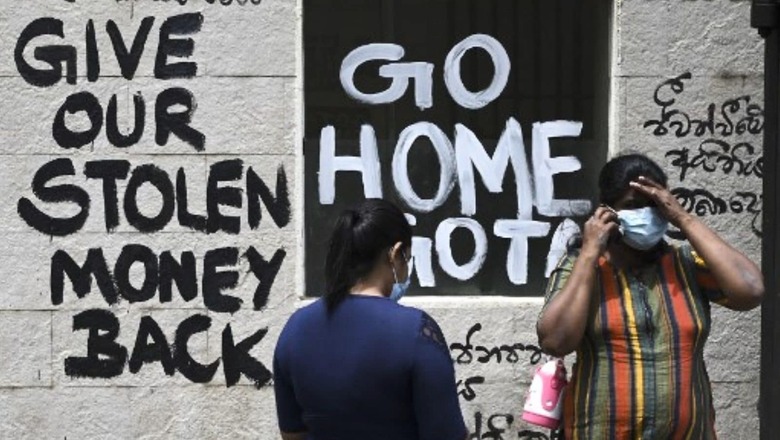
views
For Sri Lanka, the month of July continues to remain a “black mark” on its history that it tries to wash off but to no avail. Call it coincidence, but several major developments that have marred the island country have taken place in this month.
On July 9, Sri Lanka witnessed one of the biggest civil uprisings against a ruling government as protesters refused to budge from President Gotabaya Rajapaksa’s residence, a day after they stormed his home, forcing him to flee with the navy and announce he would resign.
The dramatic events were the culmination of months of protests by people enraged by the country’s unprecedented economic crisis and the Rajapaksa clan’s incompetence and corruption.
This is also the month that is observed as ‘Black July’ by Sri Lankan Tamils after the anti-Tamil pogrom. On the intervening night of July 23 and 24, 1983, 13 Sri Lankan soldiers were brutally killed, which sparked a civil war in the country that lasted 26 long years. As the war continued, the island nation saw large-scale genocide leading to the death of over 4,000 Sri Lankan Tamils. Finally, in 2009, the war ended and resulted in the elimination of the Liberation Tigers of Tamil Eelam (LTTE), a militant separatist group fighting for an independent homeland for Hindu Tamils in the Northeastern part of Sri Lanka.
On July 29, 1987, the India-Sri Lanka accord was signed by India’s then Prime Minister Rajiv Gandhi and Sri Lankan President JR Jayawardene in an effort to resolve the Sri Lankan Civil war. However, this accord failed to meet its objectives and the Indian Army sent to Sri Lanka on a mission to facilitate the country’s freedom suffered huge losses.
Gandhi’s move to send the Indian Peace Keeping Force (IPKF) to Sri Lanka irked LTTE chief Prabhakaran, who is said to have nursed a personal grudge against the then prime minister and planned his assassination. A Supreme Court judgment by Judge KT Thomas also stated that Gandhi was killed by Prabhakaran as vengeance for sending the IPKF to Lanka and subsequent alleged IPKF atrocities against Sri Lankan Tamils.
Five years ago, on July 29, a debt-ridden and cash-strapped Sri Lanka was forced to lease out the Hambantota Port to the Chinese government in an effort to settle the loan it owned to a Chinese construction company for a period of 99 years. The construction of the port began in 2008 with a loan of $ 1.3 billion as a joint collaboration with the China Harbor Engineering Company (CHEC) and the Sino Hydro Corporation. However, by 2016, the Sri Lanka Ports Authority declared losses of about SLR 46.7 billion and had an outstanding of nearly $1.7 billion to be paid to the Chinese companies as principal and interest for the loan taken to build the port.
Cut to the present, Sri Lanka’s Speaker Mahinda Yapa Abeywardena has said that embattled President Gotabaya Rajapaksa will step down on July 13, another date in a month in which Sri Lanka has seen fallouts.
The move seems strategic since the date also has a religious significance. July 13 will be the first full moon day of the month and according to the Theravada Buddhism calendar, it is a significant day and is observed as ‘Esala Poya’ or the day when Gautam Buddha delivered his first sermon. The ‘Poya’, or the first full moon of every month, carries great religious significance for Buddhists and every ‘Poya’ is observed as a public holiday in the country. Gotabaya, a staunch Buddhist himself, may have chosen the day to step down to give his departure a poignant touch.
Read all the Latest News, Breaking News, watch Top Videos and Live TV here.




















Comments
0 comment